
Do you have a question about the Jeep Compass 2008 and is the answer not in the manual?
| Brand | Jeep |
|---|---|
| Model | Compass 2008 |
| Category | Automobile |
| Language | English |
Information about the higher rollover rate of utility vehicles and safety precautions.
Guidance on consulting the table of contents, index, and symbol descriptions.
Explanation of warnings against unsafe procedures and cautions against vehicle damage.
Location and importance of the VIN for vehicle identification.
Warning about potential safety risks from vehicle modifications.
Information on key code numbers and ordering duplicate keys.
Procedure for removing the ignition key from manual and automatic transaxles.
Instructions on how to lock and unlock vehicle doors using the key.
Explanation of the passive steering wheel lock for manual transmissions.
Details on the Sentry Key Immobilizer System and its operation.
Information on how the security alarm system monitors and alerts.
System overview for locking, unlocking, and panic alarm functions.
Description of power window switches and auto-down feature.
Importance of seat belts and restraints for occupant safety.
Step-by-step guide on how to properly use lap/shoulder belts.
Explanation of pretensioning devices in seat belts for collision safety.
Legal requirements and safety advice for restraining children.
Guidance on initial engine break-in procedures and driving advice.
Important safety advice for vehicle operation and maintenance.
Adjusting inside and outside mirrors for optimal visibility.
Overview of the UConnect system for voice-activated phone operations.
Information on seat adjustments including front and rear seat features.
Instructions for safely opening and closing the vehicle's hood.
Details on map/reading lights, multi-function control lever, and headlight operations.
Operation of windshield wipers, washers, and mist feature.
How to activate, set, deactivate, and resume speed control.
Explanation of ABS function and safety warnings.
How ESP enhances vehicle stability and its operating modes.
Information on programming and using the HomeLink system.
Safety warnings and operating instructions for the power sunroof.
Details on 12-Volt and 115-Volt power outlets and their usage.
Description of console features like armrest, flip pocket, and storage bin.
Information on cargo light, removable flashlight, cargo cover, and load floor.
Operation of rear window wiper/washer and defroster.
Overview of instrument panel components like air outlets and radio.
Explanation of various warning lights and indicators.
Features and displays of the EVIC system, including messages and settings.
Information on radio broadcast signals, AM/FM reception, and electrical disturbances.
Procedure for setting the digital clock display.
Instructions for operating the radio, including volume and mode controls.
Instructions for inserting, playing, and ejecting CDs.
How to operate the climate control system for temperature and air direction.
Basic steps for starting the vehicle's engine, including warnings.
Warnings and procedures related to manual transaxle operation.
Precautions and warnings for operating automatic transaxles.
Advice on acceleration and traction in slippery conditions.
Precautions and warnings for driving through standing water.
How to set and release the parking brake and related warnings.
Information on power assisted brakes and warnings about driving with brake light on.
Explanation of ABS functionality and safety warnings.
Information on power steering system operation and noise.
Details on tire markings, identification numbers, and safety.
Importance of proper tire pressure for safety, economy, and ride comfort.
Where to find and how to check tire inflation pressures.
Information and warnings regarding the use of a compact spare tire.
Warnings and advice against spinning wheels when stuck.
Recommendations for selecting equivalent replacement tires.
Information on the effects of poor suspension alignment and tire balance.
Benefits of timely tire rotation for wear and performance.
How the TPMS warns of low tire pressure and system malfunctions.
Information on gasoline requirements, octane ratings, and oxygenate blends.
Information about MMT additive and manufacturer recommendations.
Guidelines for maintaining vehicle performance and avoiding fuel system damage.
Precautions to prevent carbon monoxide poisoning from exhaust gases.
Instructions and warnings for adding fuel to the vehicle.
Guidance on vehicle loading capacities and weight ratings.
Safety tips and information on towing trailers with your vehicle.
Industry standards for classifying trailer hitches and their weight ratings.
Chart of maximum trailer weight ratings based on engine/transmission.
Importance of proper trailer loading and tongue weight distribution.
Guidelines for towing, including break-in period and speed limits.
How to use hazard warning flashers and when to use them.
Actions to take if the engine overheats to prevent damage.
Information on automatic transaxle overheating indicator light.
Safety warnings and instructions for jacking and changing a tire.
Step-by-step guide for safely jump-starting a vehicle with a low battery.
Methods for rocking the vehicle to free it from mud, sand, or snow.
Instructions for towing a disabled vehicle with or without ignition key.
Identification of key components in the gasoline engine compartment.
Explanation of the OBD II system and the malfunction indicator light.
Information on emissions testing requirements and OBD system readiness.
Recommendation to use genuine Mopar parts for performance and warranty.
Importance of using qualified dealer service personnel and tools.
Overview of required and recommended maintenance services for the vehicle.
Procedures for checking and changing engine oil.
Instructions for inspecting the drive belt for damage and replacement.
Importance of proper spark plug function and replacement intervals.
Requirements for catalytic converter operation and damage prevention.
Information on fuel filter function and replacement.
Procedure for replacing the air cleaner element.
Information on the maintenance-free battery and servicing precautions.
Recommendations for servicing the air conditioner at the start of warm season.
When and how to check power steering fluid level.
Inspection of front suspension lower ball joints for seal damage.
Periodic lubrication of locks, pivots, hinges for quiet operation and protection.
Cleaning and replacement procedures for windshield wiper blades.
Location and checking of the windshield washer fluid reservoir.
Importance of a maintained exhaust system for carbon monoxide prevention.
Warnings and precautions when working near the cooling fan or hot coolant.
How to check engine coolant protection and level.
Procedure for draining, flushing, and refilling the cooling system.
Recommendations for choosing and mixing engine coolant.
Inspection of hoses and tubing for heat/mechanical damage and leaks.
Importance of using specified tubes and connections for fuel system servicing.
Periodic inspection of brake system components for performance.
Checking brake fluid level and adding fluid if necessary.
Importance of scheduled maintenance for emission control system function.
Reminders for scheduled maintenance like oil changes based on vehicle usage.
Table of recommended maintenance intervals based on miles, kilometers, or months.
Advice on preparing for service appointments and communicating with dealers.
Manufacturer's commitment to customer satisfaction and dealer support.
Reference to the warranty booklet for terms and provisions.
Availability of Mopar fluids, lubricants, parts, and accessories from dealers.
How to report safety defects to NHTSA and the manufacturer.
Information on how to order service and owner's manuals.
Explanation of DOT tire grading categories: Treadwear, Traction, and Temperature.
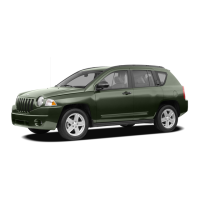
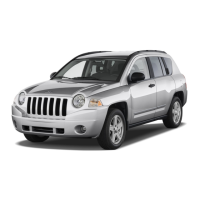
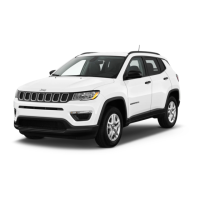
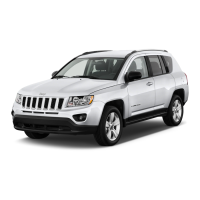


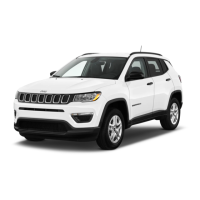
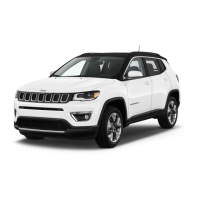
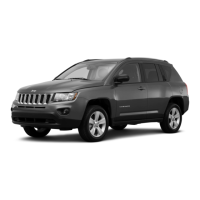

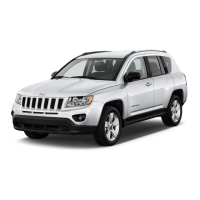
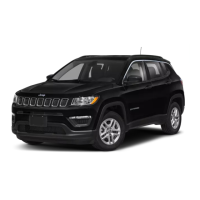
